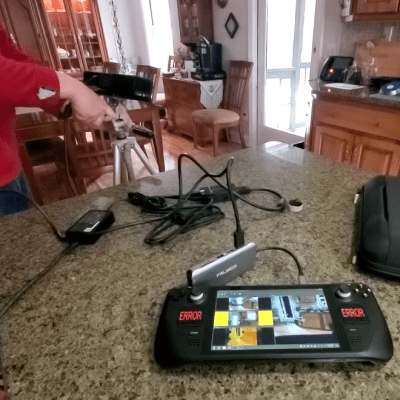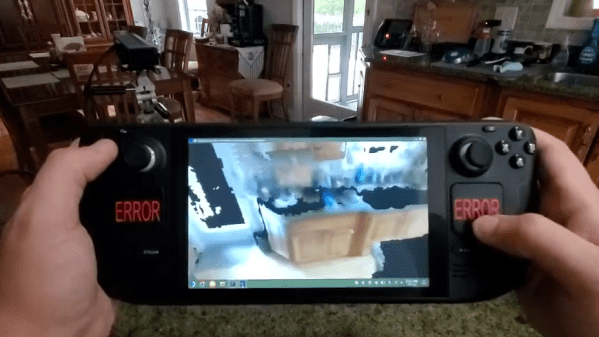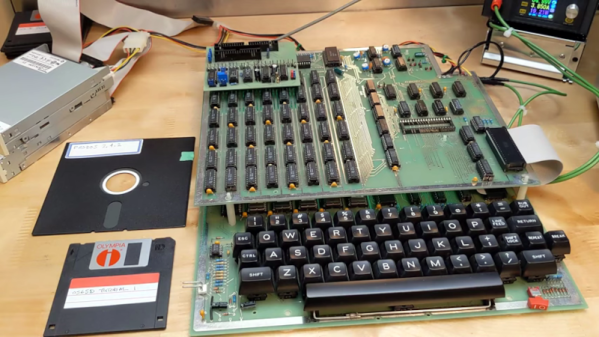Off-the-shelf stock parts are the blocks from which we build mechanical projects. And while plenty of parts have dedicated uses, I enjoy reusing them in ways that challenge what they were originally meant for while respecting the constraints of their construction. Building off of my piece from last time, I’d like to add to your mechanical hacking palette with four more ways we can re-use some familiar off-the-shelf parts. Continue reading “The BSides: More Curious Uses Of Off-the-shelf Parts”
Day: April 24, 2023
3D Scanning A Room With A Steam Deck And A Kinect
It may not be obvious, but Valve’s Steam Deck is capable of being more than just a games console. Demonstrating this is [Parker Reed]’s experiment in 3D scanning his kitchen with a Kinect and Steam Deck combo, and viewing the resulting mesh on the Steam Deck.

[Parker] runs the RTAB-Map software package on his Steam Deck, which captures a point cloud and color images while he pans the Kinect around. After that, the Kinect’s job is done and he can convert the data to a mesh textured with the color images. RTAB-Map is typically used in robotic applications, but we’ve seen it power completely self-contained DIY 3D scanners.
While logically straightforward, the process does require some finessing and fiddling to get it up and running. Reliability is a bit iffy thanks to the mess of cables and adapters required to get everything hooked up, but it does work. [Parker] shows off the whole touchy process, but you can skip a little past the five minute mark if you just want to see the scanning in action.
The Steam Deck has actual computer chops beneath its games console presentation, and we’ve seen a Steam Deck appear as a USB printer that saves received print jobs as PDFs, and one has even made an appearance in radio signal direction finding.
Continue reading “3D Scanning A Room With A Steam Deck And A Kinect”
OSI Superboard II Replicated
While our modern computer can easily emulate a lot of different old machines, there is something about having replica hardware that is even better. Not as nice as having the real thing, in some ways, although you don’t have to worry about wear and tear on a replica, either. [Jeff Tranter] has built a kit replica of an Ohio Scientific Superboard II, and it looks great, as you can see in the video below.
This was an inexpensive all-in-one 6502 computer with a keyboard and provision for TV or monitor output. If you had a 5V power supply, a cassette deck, and a TV you were in business for less money than most of the comparable alternatives. In fact, [Jeff] has the canceled check where his parents paid $486 Canadian for one in 1981. That was his introduction to computing, and we’d say that was a reasonable investment on the part of his parents.














